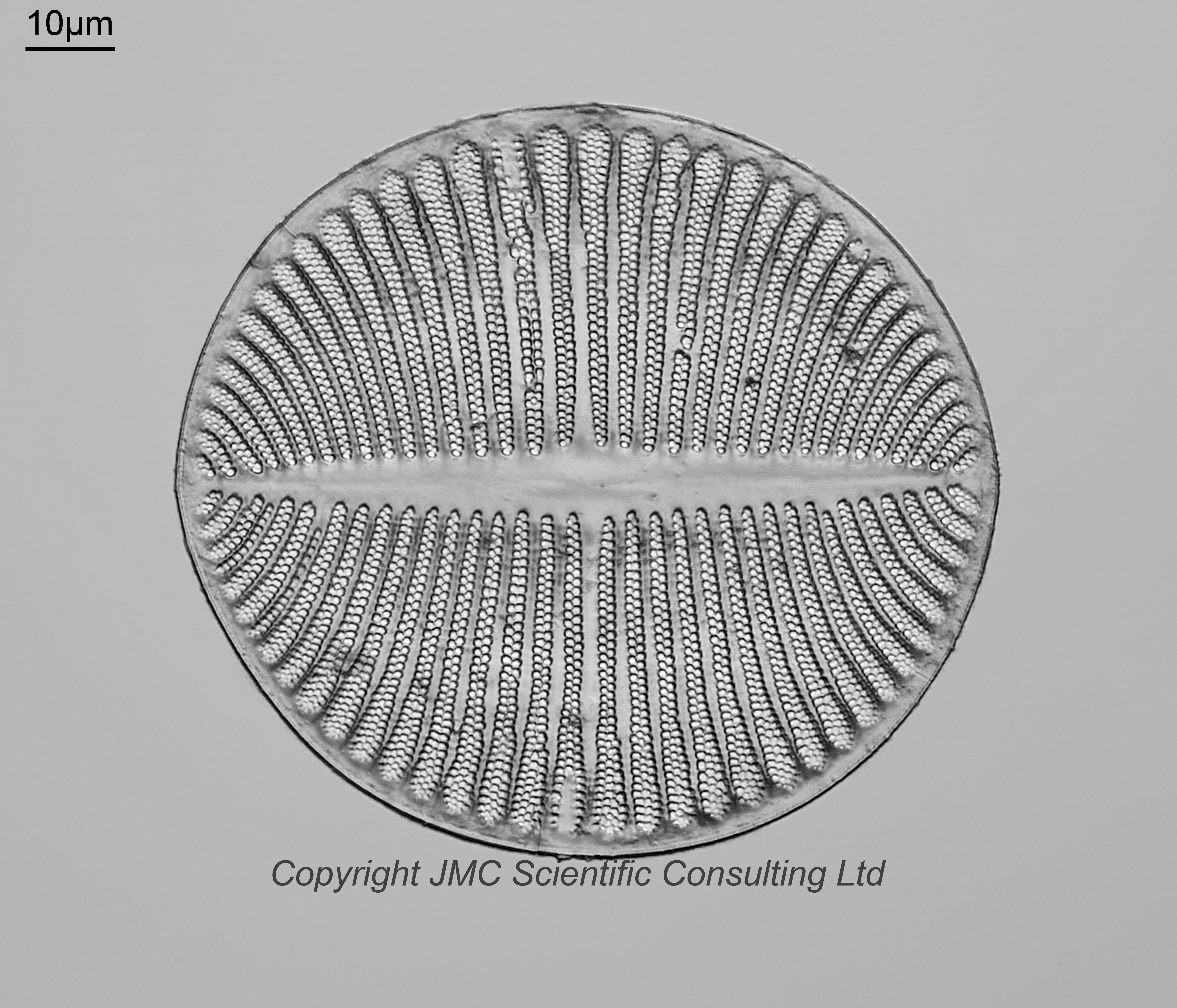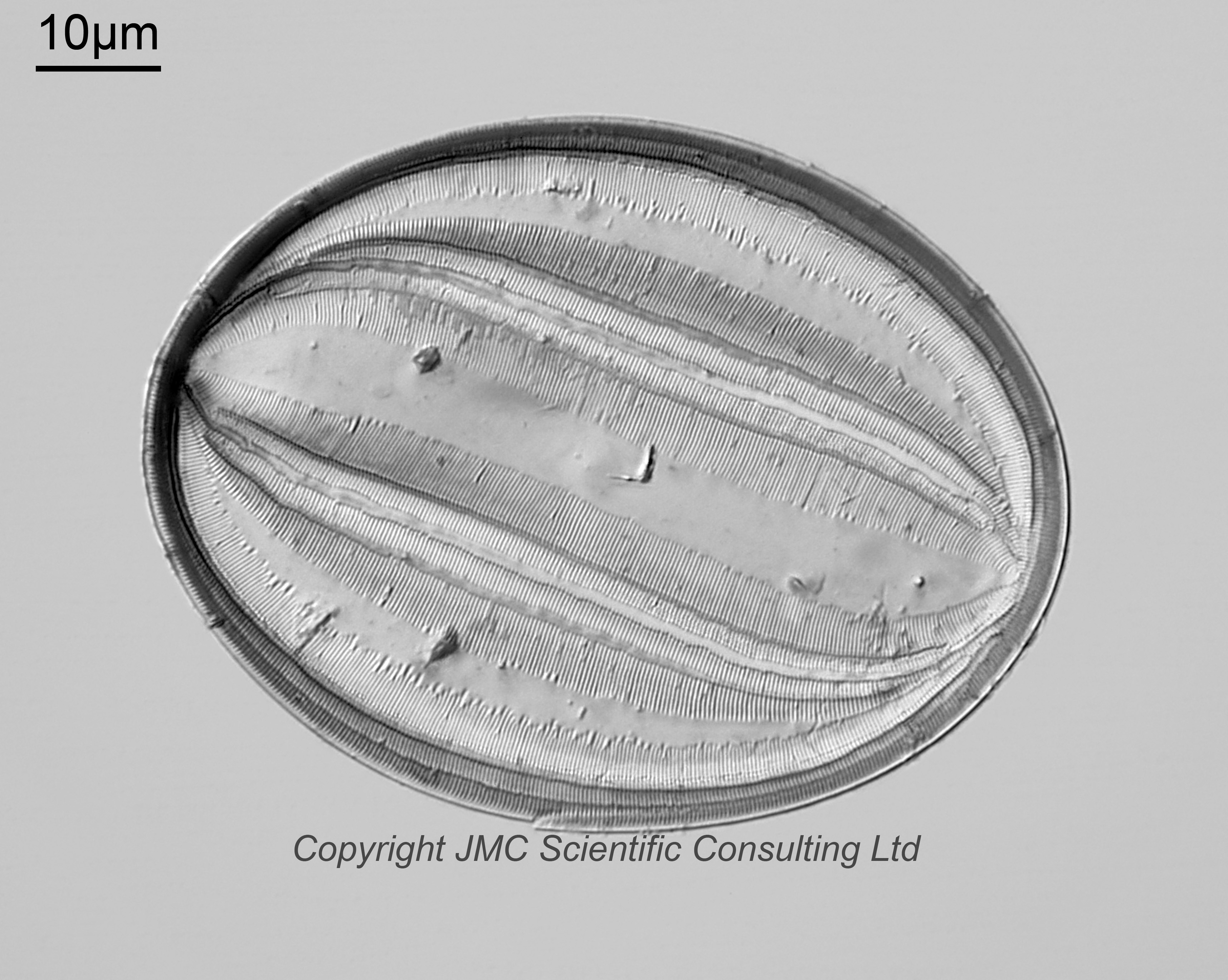




An arrangement of eight Cocconeis diatoms, although there does look to be a ninth one which has moved. Prepared by Flatters and Garnett Ltd and mounted in Hyrax. Two selected for higher resolution imaging (diatoms 1 and 3 from the left looking at the 10x objective image). Olympus BHB microscope using 450nm LED light. 63x Leitz Pl Apo 1.4 objective, oil immersion. Olympus Aplanat Achromat condenser, oil immersion, oblique lighting. 2.5x Nikon CF PL photoeyepiece. Monochrome converted Nikon d850 camera. Image stacks prepared in Zerene (Pmax), 34 images for the first one and 48 images for the second one.
I’ve looked around for names for these two, and have ended up at the following;
The first is I think Cocconeis extravagans. Looking at Schmidt’s Atlas, produced a couple of possibilities – Plate 189, Figure 9, Cocconeis costata var. Kergnuelensis and Plate 148, Figure 30, Cocconeis extravagans Janisch. These could be describing the same diatom (in: VanLandingham, S.L. (1968). Catalogue of the fossil and recent genera and species of diatoms and their synonyms. Bacteriastrum through Coscinodiscus Part 2. pp. 494-1086). This is discussed in a USGS document (here in Figure 20) which shows a good visual match to this one. Hence I am going with Cocconeis extravagans, which as a name seems to match its appearance.
The second looks to be Cocconeis heteroidea. Schmidt’s Atlas Plate 196, Figure 41. The striae on this were really nicely resolved so I measured their spacing in ImageJ as being 338nm.